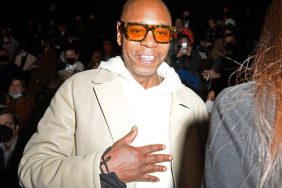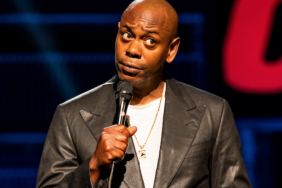Even before the movie proper begins, the dedication that kicks off Dave Chappelle’s Block Party speaks volumes: “Dedicated to J Dilla, aka Jay Dee (James D. Yancey).” It’s a cultural marker, letting the viewer know – amongst other things – that they’re about to enter a world shaped and scored by very specific strains of hip-hop and blackness. Crucially, as the film unfolds, it underscores that while these strains might not be “pop,” might in fact be deemed elite, or sneeringly referred to as conscious shit in some quarters, it is not elitist or inaccessible. It’s blackness that strums universal chords by loving and affirming blackness, culling from (musical) language and concepts not overly commodified.
Part concert film, part travelogue, and part modern-day black inner-city barbershop conversation writ large, the film owes much to the classic 1973 concert film Wattstax, in which Richard Pryor acts as emcee and oracle, dropping political analysis in the form of truth and blistering humor in between live performances by Isaac Hayes, the Staple Singers, the Bar-Kays, Rufus Thomas, and more. Not only are almost all the performances both flawless and exhilarating, they collectively coalesce into a powerful statement on African American innovation and resilience in the face of the unrest and uprisings of the ‘60s – and not just the 1965 Watts riots that served as impetus for the commemorative concert seven years later.
Check Out: Art Doc of the Week: Cutie and the Boxer
In Block Party, Chappelle and the musicians in the film pull similar duties to Pryor and the earlier generation’s musicians, without the newer film ever quite scaling the glorious heights of its predecessor. As Block pivots from the outdoor Brooklyn concert stage to classrooms (kindergarten and college), cafes, and man and woman on the street interviews, director Michel Gondry keeps the energy level high, though he frequently steps on the audience’s high by cutting away from blistering onstage moments to backstage or on-the-street conversations. He’s often staggeringly tone deaf to the power of what his camera is capturing in live performances from the Roots, Mos Def, Common, Jill Scott, Erykah Badu, and a reunited Fugees before Lauryn had made the full-scale career and personal comeback she’s enjoying today. While the off-stage hijinks are often truly laugh out loud hilarious, and the political commentary pungent, they largely pale next to the same kind of fare offered in Wattstax.
What gives the film its poignancy are the many conversations it sparks about black artists and what is expected of and taken from them, the limitations on their art often reflecting the limitations on their life. That ranges from the explicit (Chappelle introducing Dead Prez from a rooftop with the observation, “The more you say with it [your music], the less airplay you get. Guys like Dead Prez, they say it all, but you hardly ever hear them on the radio.” Questlove speaking of the weirdness of looking into your audience and sometimes seeing no one who looks like you) to the implicit (the mere presences of Lauryn Hill and Chappelle after their well-documented career battles and the fallout that fell into their personal lives).
It’s not a great film but it is hugely enjoyable, if occasionally frustrating. And it’s filled with timeless conversations on the intersections of black life and art, and the tensions around where the two meet.
Ernest Hardy is a Sundance Fellow whose music and film criticism have appeared in the New YorkTimes, the Village Voice, Vibe, Rolling Stone, LA Times, and LA Weekly. His collection of criticism, Blood Beats Vol. 1: Demos, Remixes and Extended Versions (2006) was a recipient of the 2007 PEN / Beyond Margins Award.








